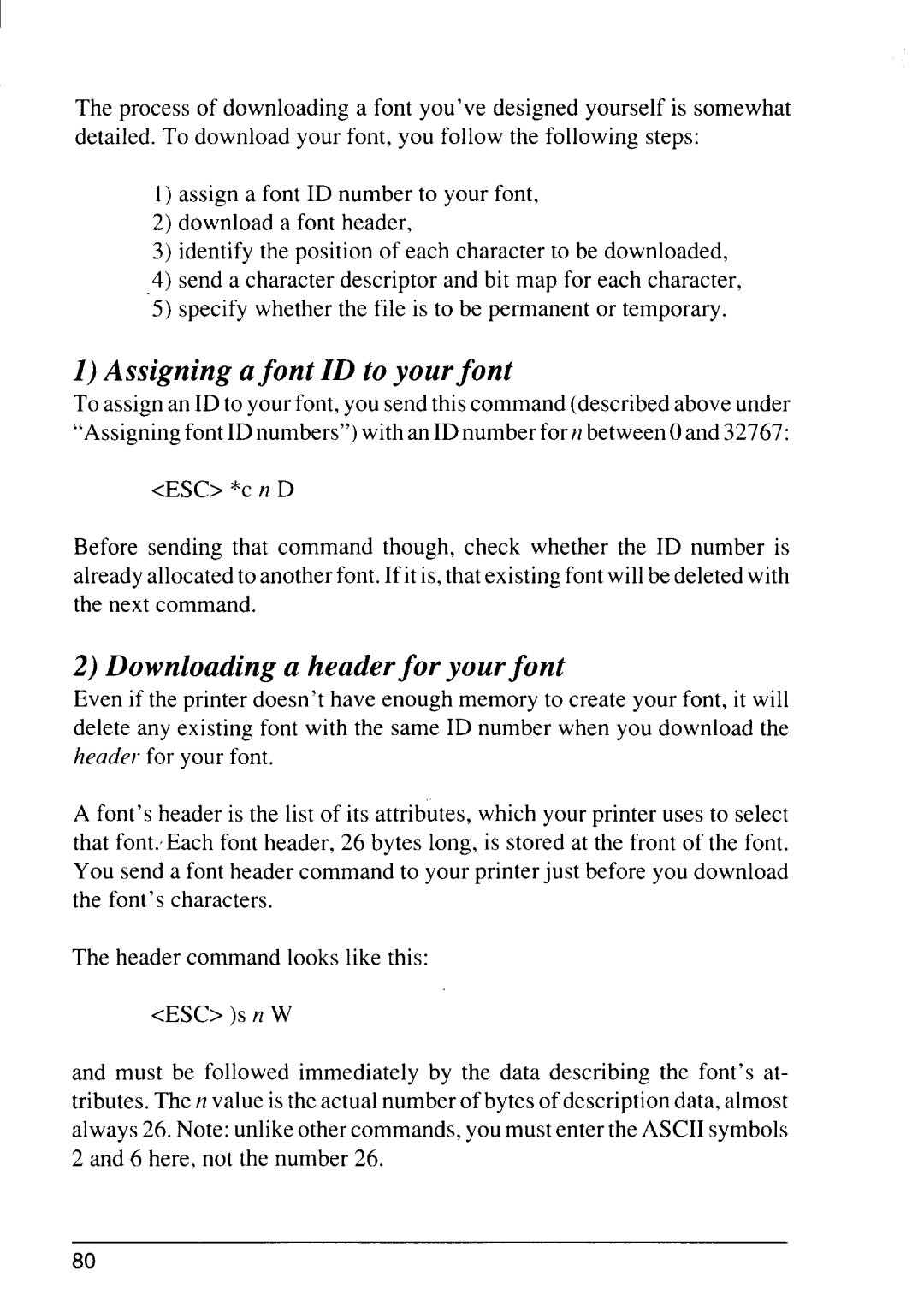
The process of downloading a font you’ve designed yourself is somewhat detailed. To download your font, you follow the following steps:
1)assign a font ID number to your font,
2)download a font header,
3)identify the position of each character to be downloaded,
4)send a character descriptor and bit map for each character,
5)specify whether the file is to be permanent or temporary.
1)Assigning a font ID to your font
To assign an ID to your font, you send this command (described above under “Assigning font ID numbers”) with an ID number fern between Oand 32767:
<ESC> *c n D
Before sending that command though, check whether the ID number is already allocated to another font. If it is, that existing font will be deleted with the next command.
2) Downloading a headerfor your font
Even if the printer doesn’t have enough memory to create your font, it will delete any existing font with the same ID number when you download the headerfor your font.
A font’s header is the list of its attributes, which your printer uses to select that font. Each font header, 26 bytes long, is stored at the front of the font. You send a font header command to your printer just before you download the font’s characters.
The header command looks like this:
<ESC> )S n W
and must be followed immediately by the data describing the font’s at- tributes. The n value is the actual number of bytes of description data, almost always 26. Note: unlike other commands, you must enter the ASCII symbols 2 and 6 here, not the number 26.
80
